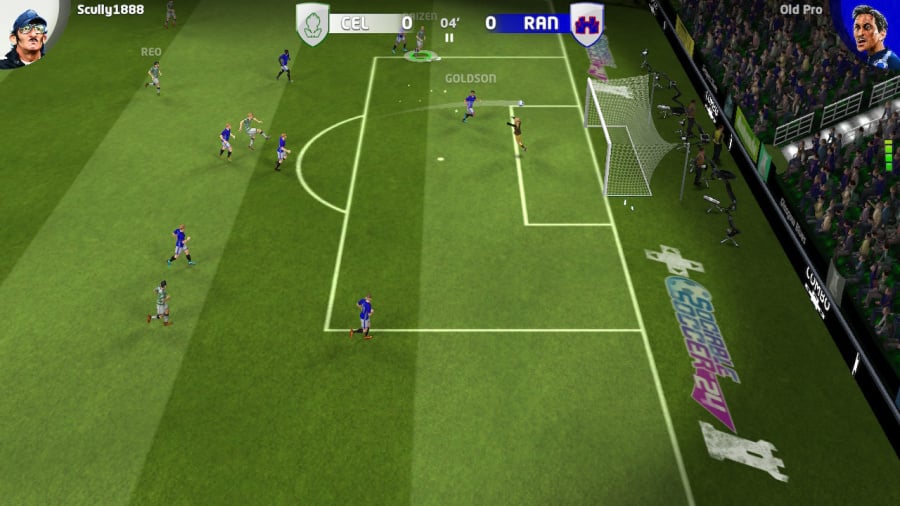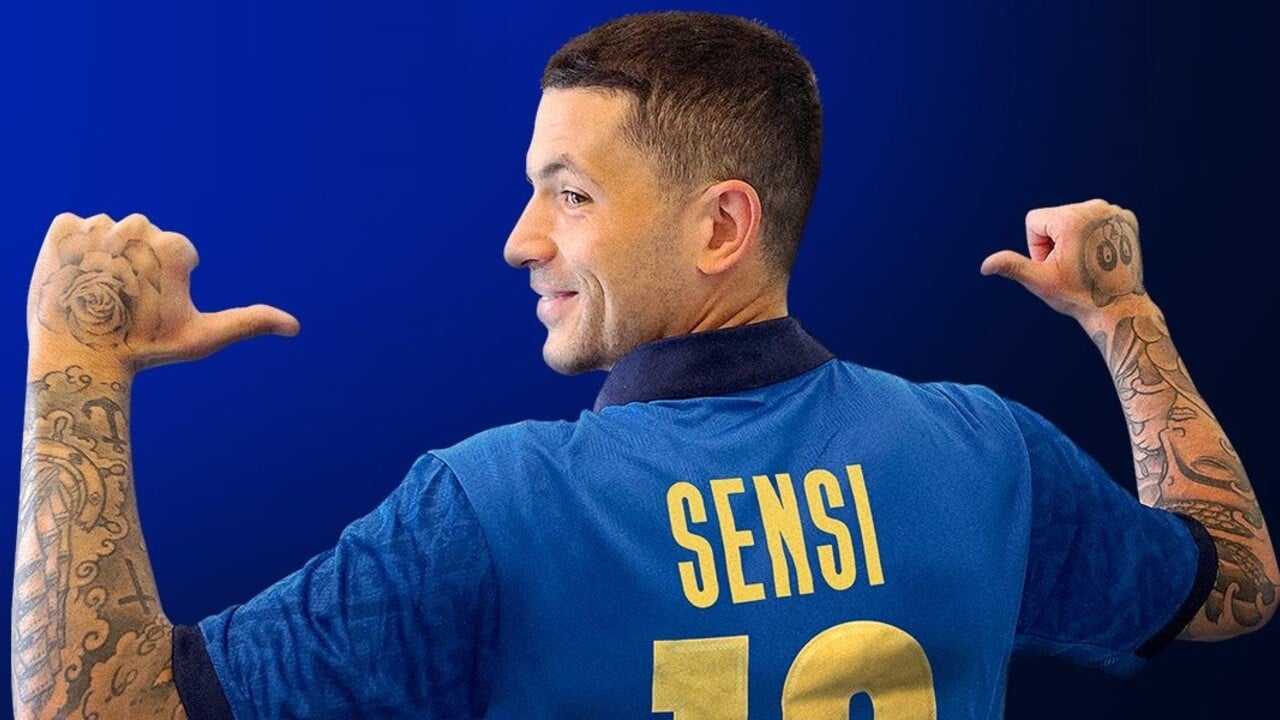The debate over what is the best football video game has raged for decades.
Until now, there hasn’t really been much choice on Switch. There’s EA Sports FC (which thankfully is finally worth buying now), but with Konami’s eFootball (formerly PES) nowhere to be seen, the other options are arcade-style indie games whose quality varies wildly.
On the surface, Sociable Soccer 24 – which was originally tested for a possible Switch release seven years ago – is another one of these arcade indies, but to put it aside would be to score a huge own goal, as there’s a real family tree here.
For those unfamiliar, Sociable Soccer is the brainchild of Jon Hare, the co-founder of legendary British developer Sensible Software. For some, the football game Sensible Soccer – affectionately known as Sensi among the legion of Gen X fans – and its massive sequel Sensible World of Soccer remain the best video game interpretations of the sport, EA and Konami be damned.

With the name Sensible Soccer seemingly no longer available to Hare, he has started looking for a title that sounds similar. However, the game itself is clearly inspired by the series that made his former studio one of the biggest names in Europe in the 90s.
Like its spiritual forebear, Sociable Soccer is focused on arcade-style football gameplay, enhanced by a brilliantly exaggerated aftertouch system that lets you bend shots with gusto. Aftertouch has even been added to ground passes this time, allowing experienced players to bend passes that roll around defenders to reach the players they are blocking.
However, despite the obvious source material, the game does differ when it comes to dribbling. This was one of the more difficult things about Sensible Soccer – and one of the things that made it a joy once you mastered it – because a sudden change of direction would cause the ball to escape, whereas here it was practically at the feet of your player is glued in place. Players also run a lot slower than in Sensi, even with the addition of a sprint button. It’s not necessarily bad, it’s just different.

Sensible fans will also hope that Sociable Soccer’s standard side-scrolling camera angle, which is perfectly serviceable, can be changed to something more akin to the game they grew up with. Fortunately, you can indeed: of the five camera options available, the second is a clear attempt to recreate Sensible Soccer with a vertical camera that makes getting those twisty shots a lot easier.
So it’s a success on the field – especially when you’re playing against a friend – but in the game modes, Sociable Soccer is more of a mixed bag. The main Career mode is a strange squad-building affair that feels a bit like FIFA Ultimate Team (or the Master League of classic PES games) combined with a mobile gacha game.
After you choose your team, their usual players are replaced by a team of complete no-hopers – each represented by a card – and the aim is to work your way up through countless divisions, winning matches and achieving win-streaks challenges and the like. the route. As you do that, you’ll occasionally unlock new player cards, which can be used to replace weaker players on your team. Alternatively, if you don’t like the new player you have, you can ‘spend’ it on upgrading an existing squad player of the same nationality or position (presumably in some sort of off-screen human sacrifice).

While the idea of building a team over time is nothing new, its random nature feels a little disappointing, especially considering that the game’s creator’s previous work is arguably the best football game career mode ever in Sensible World of Soccer. Something as simple as a transfer market would have made the process of improving your team more attractive, but as it is now you literally have to play with the cards you’re dealt.
If you fancy something less gimmicky and just enjoy some no-nonsense football, then thankfully World mode makes up for Career. Here you can choose from a number of real competitions (albeit with fake names), select a participating team you like, and try to win that trophy, with the overall goal of completely filling the cabinet with all 78 trophies.
There are seven domestic tournaments here (such as unlicensed equivalents of the European Championship, World Cup and the like), seven club tournaments (Champions League, etc), 37 individual competitions and 28 domestic trophies to win, so there’s a lot to play. to get here. Crucially, this mode can also be played offline, while Career requires an internet connection for unclear reasons, so this is the mode you play on the go.

It is also here where the game’s amazing database can be found. Like Sensible World of Soccer before it, the sheer number of clubs and players here is ridiculous, with a total of 237 international teams and 1,195 club teams from around the world, meaning you can finally have the match between Kashima Antlers and Al Ahly. which I always dreamed of (although here it would be Kashima versus Cairo).
That’s the only real disappointment here, by the way: the game doesn’t have any real team names, so if you don’t know your stuff when it comes to a particular league, finding a particular team can be tricky. Things like Glasgow Hoops vs. Glasgow Blues should be obvious, but if you don’t know your Mexican geography you might not be able to tell that Aguascalientes is actually Club Necaxa. Easy mistake to make, you know.
Fortunately, the vast majority of player names are real, thanks to the presence of a FIFPro license. There are claimed to be over 13,000 licensed professionals in the game, and we’ll take their word for it (we got tired enough counting the teams). Many of them also have pictures, which adds some personality to the otherwise fairly simple character models.

The only other major downside to Sociable Soccer 24 as it currently stands is that we can’t find any online multiplayer on Switch, despite the eShop and the back of the physical box claiming otherwise. [“Online play coming to Console soon,” according to PR.] For now, keep in mind that despite the game’s title, any socializing you want to do with this game will have to be offline. Which it’s great for, to be clear, given its pick-up-and-play nature.
